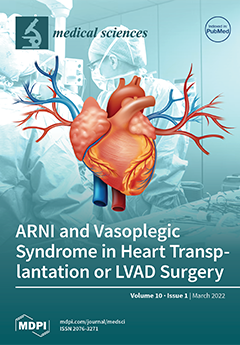Babesia and
Theileria are protozoan parasites belonging to the order piroplasmida, transmitted by hard ticks, and can cause diseases known as piroplasmosis. Human infections are usually asymptomatic, except in immuno-compromised persons who present malaria-like symptoms. Moreover, microscopically, the morphologies of
Babesia and
Theileria can resemble that of the malaria parasite,
Plasmodium. In malaria-endemic areas with limited resources, these similarities can increase the possibility of misdiagnosing a patient as having malaria instead of piroplasmosis, which may further lead to inappropriate choice of disease management. This preliminary investigation aimed at detecting
Babesia/
Theileria in cattle, dogs and humans in some parts of Accra. Whole blood samples were taken from febrile cattle (
n = 30) and dogs (
n = 33), as well as humans diagnosed with malaria (
n = 150). Blood samples of all study subjects were microscopically screened for possible presence of
haemoparasites. Samples whose smears had features suggestive of possible piroplasmic infection were all given the label “suspected
Babesia/Theileria-infected” samples. Nested polymerase chain reaction (PCR) was performed on extracted deoxyribonucelic acid (DNA) from all the “suspected” samples of cattle, dogs and humans, with primer sets that can detect 18S rRNA genes of
Babesia/
Theileria spp. In addition to this, amplification was performed on the “suspected” dog samples using the BcW-A/BcW-B primer set which detects the 18S rRNA genes of
B. canis, while the BoF/BoR primer set which targets the rap-1 region of
B. bovis and another primer set which detects the 18S rRNA genes of most bovine
Babesia spp. (including
B. divergens) were used on the suspected cattle samples. For the human samples, however, additional amplification was done on the extracted DNA using primers for the three other
Babesia targeted (
B. divergens,
B. bovis and
B. canis). Microscopy showed possible
Babesia/
Theileria infection suspected in all three groups of subjects in the following proportions: cattle (10/30; 33%), dogs (3/33; 9%) and humans (6/150; 4%). DNA from one-third of the “suspected” dog samples yielded amplification with
Babesia canis primers. Moreover, a broad-detecting set of primers (that can amplify some
Babesia and
Theileria species) amplified DNA from nine (9/30; 30%) of the “suspected” cattle samples, but none from those of the humans. Although for this study conducted in the city, the
Babesia/
Theileria primers used did not amplify DNA from the six “suspected” human samples; the possibility of
Babesia/
Theileria infection in humans in other parts of the country cannot be overruled. There is therefore a need for further studies on possible emergence of human babesiosis/theileriosis in other parts of Ghana and sequencing for specific identification of any circulating strain.
Full article




